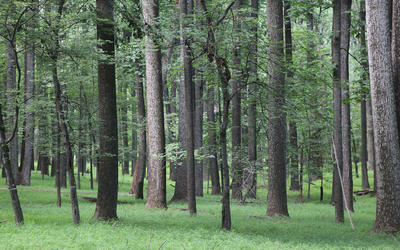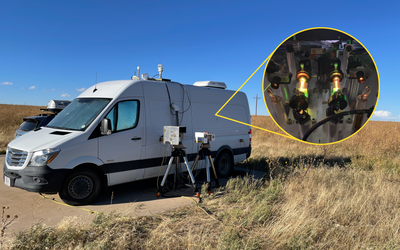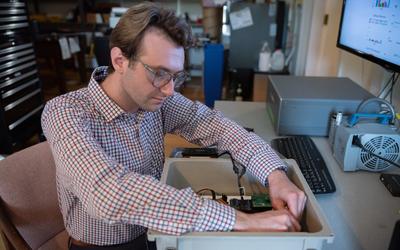The NIST Greenhouse Gas (GHG) Measurements Program develops advanced tools and standards for accurately measuring GHG emissions so industries and governments can have the information they need to manage emissions effectively.
Promoting Innovation
Currently, most cities estimate their GHG emissions based on indirect economic measures, such as the number of vehicle-miles traveled within the city. The NIST GHG Measurements Program develops technologies to measure emissions directly based on atmospheric observations from towers, aircraft and satellites. By combining economic data with atmospheric observations, scientists can provide stakeholders with emissions estimates that are more accurate, and have lower uncertainties, than either approach used alone.
A Focus on Cities
Urban areas are home to roughly half the world’s population, and they account for more than half of total fossil fuel emissions. For this reason, we have established a system of three Urban Test Beds where scientists develop advanced technologies for directly measuring emissions at small scales in space and time. This makes it possible to attribute emissions to specific sources such as individual neighborhoods, traffic corridors, or landfills, and to observe how those emissions change over daily and seasonal cycles. This high-resolution data can give stakeholders the timely, accurate information they need to manage emissions more effectively.
A Trusted Third Party
When you buy a gallon of gas or a pound of sugar, you can be confident that you’re getting what you paid for in part thanks to measurement standards developed at NIST. These standards are necessary for markets to function efficiently and for regulations to be implemented fairly. NIST is also developing measurement standards for GHG emissions that define, for instance, what constitutes a ton of emitted carbon. Because NIST is not a regulatory agency, we are able to work closely with other agencies and regulated industries to ensure that emission measurements are accurate, reliable, and standards-based.






